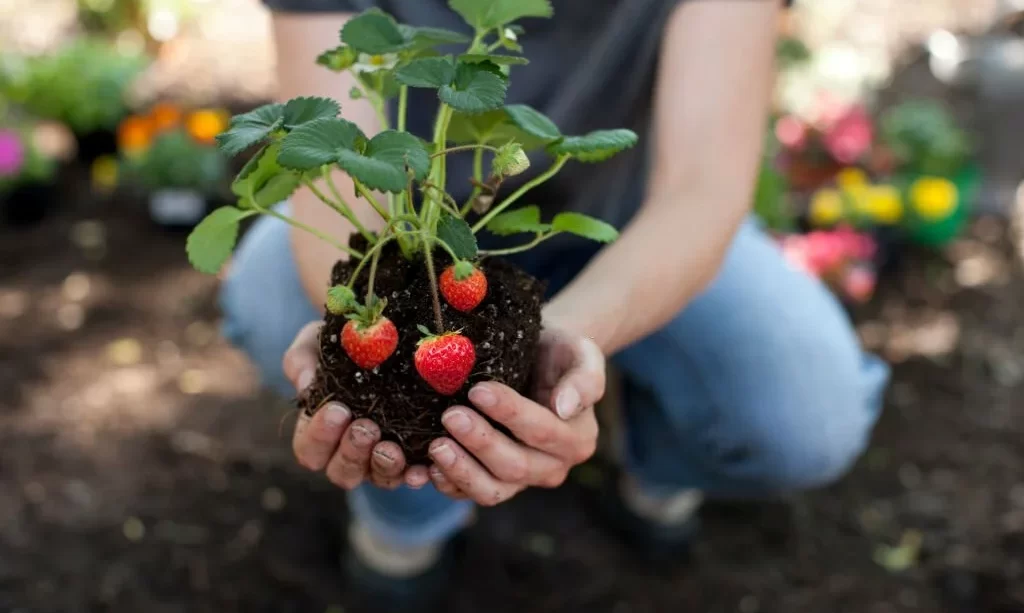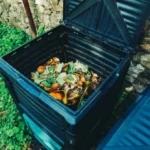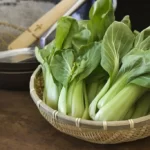In the heart of the South, where the sun shines bright and the soil is fertile, Georgia boasts a sweet tradition that delights both locals and visitors alike—strawberries. These crimson jewels are more than just a fruit; they’re a symbol of the state’s agricultural abundance and a delicious treat for all. But to ensure a luscious strawberry harvest in the Peach State, one must grasp the art of planting these berries at the right time. In this article, we’ll be your guide to planting strawberries in Georgia, emphasizing the importance of timing for a thriving strawberry patch. Join us in exploring the world of strawberries and discover when to sow the seeds for a fruitful bounty.
The Strawberry Varieties of Georgia
Georgia’s diverse climate and fertile soil offer a splendid canvas for an array of strawberry varieties. Each variety comes with its unique characteristics and flavors. In Georgia, you’ll find popular choices like the Camarosa, a sweet and vibrant red strawberry that’s perfect for fresh eating. The Chandler strawberry, another favorite, is renowned for its exceptional taste and texture, often used in jams and desserts. And let’s not forget the Sweet Charlie, known for its sweetness and excellent adaptability to Georgia’s climate.
The beauty of strawberry cultivation in Georgia is that you have options to suit your palate and needs. Different strawberry varieties are cultivated in various regions of the state, allowing you to savor the rich flavors and textures that strawberries can offer. Understanding the distinct qualities of these varieties is the first step to successful strawberry planting in Georgia.
Georgia’s Climate and Soil
Georgia’s climate and soil diversity make it an ideal region for growing strawberries. The state experiences a range of climate conditions, with hot summers and mild winters in the southern parts and cooler temperatures in the northern mountains. The climate varies from a humid subtropical climate in the south to a more continental climate in the north. This diversity provides opportunities for both fall and spring strawberry planting, depending on your location within the state.
Georgia’s soil is equally diverse, with sandy loam in the southern regions and clay-based soils in other areas. The combination of well-drained soil and ample sunshine makes the state an excellent location for strawberry cultivation. Understanding your local climate and soil conditions is crucial when determining the best time to plant strawberries in Georgia. Whether you’re in the southern regions or the cooler northern areas, the Peach State offers a fruitful environment for growing these delectable berries.
When to Plant Strawberries
Timing is crucial when it comes to planting strawberries in Georgia. The state’s climate variations allow for both fall and spring planting, depending on your location within Georgia.
- Fall Planting: In North Georgia, where winters can be colder, fall planting is recommended. Ideal planting times are typically from late September to early November. This allows the strawberry plants to establish their roots before the winter chill sets in.
- Spring Planting: In South Georgia, with its milder winters, strawberries are often planted in late winter to early spring. You can begin planting from late January through early March. The warmer climate in the southern regions provides a head start for the strawberry plants.
Regardless of whether you opt for fall or spring planting, it’s important to consider the frost-free date for your specific area. Keep an eye on local weather forecasts and frost advisories to ensure your strawberry plants are safe from any late frosts. The timing of your strawberry planting in Georgia can make all the difference in the success of your crop.
Planting Techniques and Care
Planting and caring for strawberries in Georgia requires a few key techniques to ensure a fruitful harvest. Start by selecting a well-drained, sunny spot for your strawberry patch. Full sun exposure is essential for the development of flavorful berries.
When planting strawberry plants, ensure proper spacing, typically about 12-18 inches apart in rows with 2-3 feet between rows. This spacing allows for good air circulation and prevents diseases. Strawberry beds are often raised to enhance drainage and provide easy access to the plants.
Maintaining consistent soil moisture is essential for healthy strawberry plants. Strawberries have shallow roots, and they benefit from even and regular watering, especially during dry spells. Mulching around the plants helps retain moisture and suppress weeds.
Strawberries are heavy feeders, and it’s important to fertilize them to support robust growth. Use a balanced, slow-release fertilizer or one formulated for strawberries following the package instructions. Regularly check for pests and diseases, such as aphids and fungal issues, and implement pest control measures as needed.
With proper planting techniques and care, your Georgia strawberry patch can thrive, and you can anticipate a delicious harvest of these sweet, red gems.
- A Must for DIY Growers: Explore the ultimate solution for DIY growers with Big A Fertilizers’ Berry Fertilizer, specially crafted for cultivating organic fruits and veggies. Whether you’re a gardening enthusiast or searching for a unique gift, this product is tailored to meet your needs.
- Excellent Results: Unlock exceptional results with our fruit nutrients, meticulously designed for both indoor and outdoor berry growth. Enjoy consistently bigger, sweeter, and juicier harvests, elevating the overall quality of your berries. It serves as raspberry fertilizer, strawberry fertilizer and an all round organic fruit fertilizer.
- Organic and Safe: Distinguish our plant fertilizer from others on the market; it’s meticulously crafted with premium organic ingredients, ensuring safety and top-notch quality. The unique blend of minerals and vitamins contributes to the health and vitality of your berries. We have our berry fertilizer organic and strawberry fertilizer organic and we are proud to be the organic choice for fertilizers.
- Incredibly Versatile: Embrace the versatility of Big Berries mineral supplement, catering to various berries like strawberries, raspberries, blueberries, blackberries, and more. This organic fertilizer is optimized for different berry types, guaranteeing optimal results. Strawberry plant food, blueberry bush fertilizer – this plant food fruit fertilizer is as flexible as they come. More than just berry tone fertilizer, this is a berry tone organic fertilizer.
- Easy to Use: Simplify your gardening experience with our Blueberry Fertilizer, packaged in convenient 13.5oz resealable pouches. Clear instructions make application a breeze, and the pouches are packed with essential tips and tricks, making it the ideal choice for DIY enthusiasts.
Nurturing Your Strawberry Patch
Caring for your strawberry patch in Georgia is a commitment that reaps the rewards of luscious, homegrown berries. Regular maintenance is essential to ensure a bountiful harvest. Keep the soil consistently moist, as strawberries are thirsty plants. Water at the base of the plants to avoid wetting the leaves, which can lead to fungal issues.
Fertilization is key to healthy strawberry growth. Consider using a balanced, slow-release fertilizer or a specialized strawberry fertilizer. Apply it following the package instructions, typically in the early spring and again after the first harvest. Mulch around your strawberry plants to conserve moisture, suppress weeds, and keep the berries clean.
Protection from pests and diseases is crucial. Strawberries are susceptible to issues like aphids, slugs, and fruit rot. Regularly inspect your plants for any signs of trouble and take prompt action to manage these challenges.
As your strawberry plants thrive and the berries ripen, you’ll find that the taste of freshly picked strawberries from your Georgia garden is simply unbeatable. The effort put into nurturing your strawberry patch will be rewarded with the sweet flavors of this beloved fruit.
Conclusion
Planting and caring for strawberries in Georgia is more than just a horticultural endeavor; it’s a celebration of the state’s bounty and a delicious tradition. Georgia’s diverse climate and fertile soil provide an ideal environment for growing strawberries, and understanding the right timing and techniques ensures a fruitful harvest.
As you embark on your strawberry-growing journey in the Peach State, remember that it’s not just about the berries you’ll pick but the moments you’ll savor. Strawberry patches become a backdrop for family gatherings, picnics, and the simple pleasure of enjoying a warm, juicy strawberry under the Georgia sun. With the right knowledge and care, your Georgia strawberry patch can provide an abundance of sweetness and memories for years to come.




